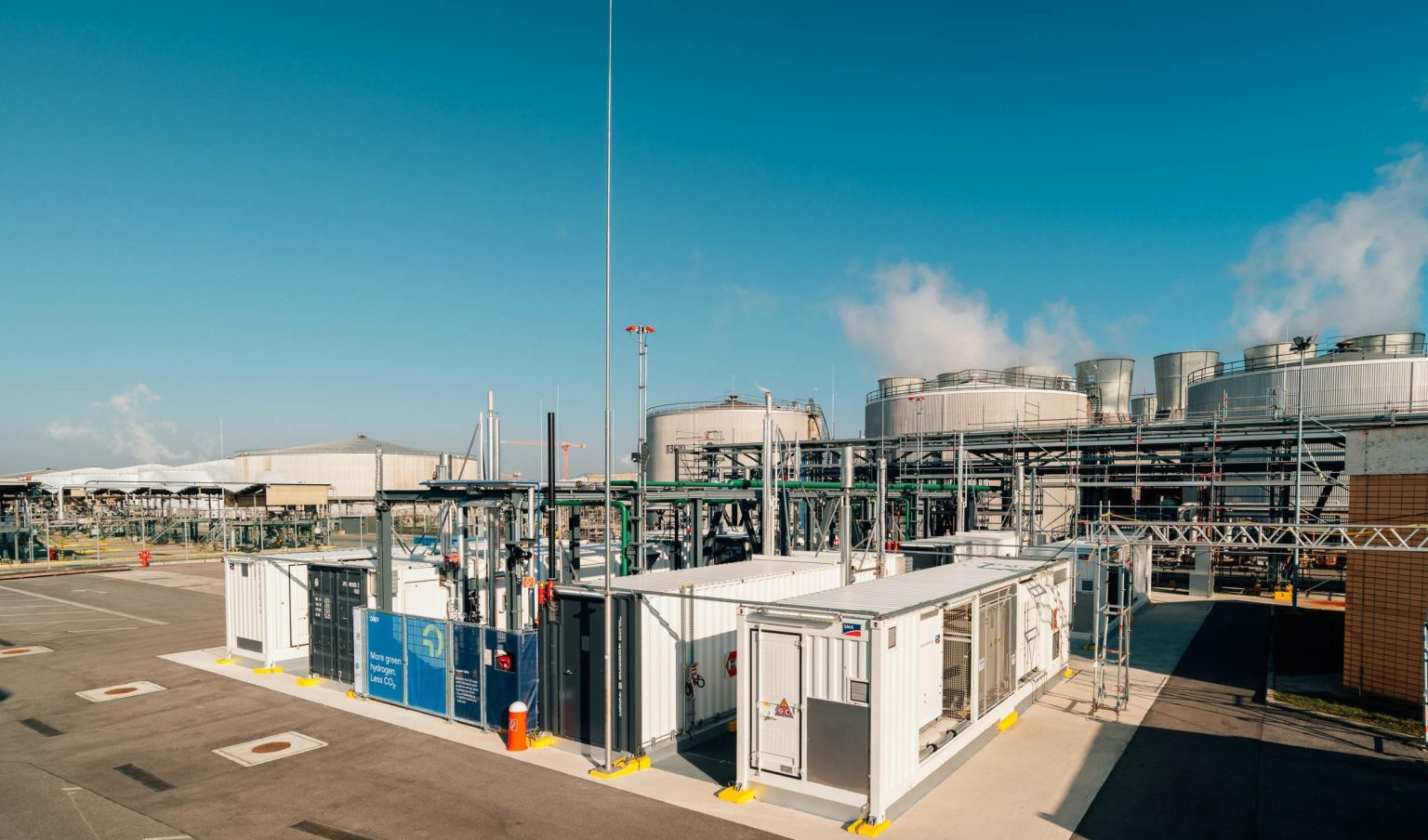Austria has taken a major step toward industrial decarbonization with OMV’s commissioning of the country’s largest green hydrogen plant.
Located at the Schwechat refinery near Vienna, the €25 million facility is designed to produce up to 1,500 tons of green hydrogen annually—enough to cut 15,000 tons of CO₂ emissions per year. This output aligns with OMV’s strategic pivot to low-carbon operations and supports broader European efforts to scale renewable fuels and reduce reliance on fossil-derived hydrogen in refining and petrochemical production.
The 10 MW polymer electrolyte membrane (PEM) electrolyzer—powered by 100% renewable electricity from wind, hydro, and solar sources—will supply green hydrogen for use in sustainable aviation fuel (SAF), hydrotreated vegetable oil (HVO), and other chemical feedstocks. OMV emphasizes that the integration of green hydrogen into its refining processes marks a foundational shift toward climate-aligned industrial chemistry.
The Schwechat plant is certified to produce renewable fuels of non-biogenic origin (RFNBOs) under the EU Renewable Energy Directive (RED II), positioning it to benefit from upcoming renewable energy quotas and sustainable transport mandates. OMV’s use of PEM electrolysis—where water is split into hydrogen and oxygen using low-carbon electricity—allows the plant to achieve near-zero emissions at the production point.
According to TÜV SÜD certification audits, the green hydrogen produced here enables lifecycle GHG savings equivalent to the annual CO₂ emissions of 2,000 EU citizens, based on the European per capita average of 7.5 metric tons of CO₂ equivalent per year (source: UBA 2024). These savings stem from displacing fossil-based hydrogen typically used in refinery operations.
The project was supported by Austria’s Climate and Energy Fund and developed under the national hydrogen initiative WIVA P&G, a key framework for integrating hydrogen into Austria’s energy and industrial systems. Development support from Kommunalkredit, a key infrastructure financier, ensured technical and regulatory readiness for the project’s April 2025 commissioning.
OMV’s foray into renewable hydrogen builds on a wider portfolio of decarbonization initiatives, including geothermal development, chemical recycling, and SAF production. The new plant serves dual purposes: reducing Scope 1 and 2 emissions within OMV’s refining operations and enabling the production of next-generation fuels compliant with EU transport decarbonization targets.
The PEM system’s efficiency and modularity make it well-suited for integration into complex refinery environments. As water molecules (H₂O) are split, hydrogen ions migrate through the PEM to form hydrogen gas, while oxygen is safely released—yielding two units of hydrogen for every unit of oxygen. The resulting hydrogen is used in refining hydroprocessing, supporting the production of lower-carbon liquid fuels that meet future market specifications.
Stay updated on the latest in energy! Follow us on LinkedIn, Facebook, and X for real-time news and insights. Don’t miss out on exclusive interviews and webinars—subscribe to our YouTube channel today! Join our community and be part of the conversation shaping the future of energy.





